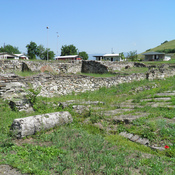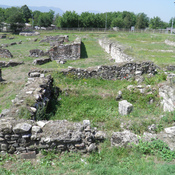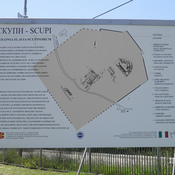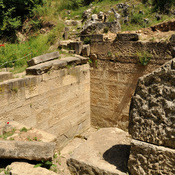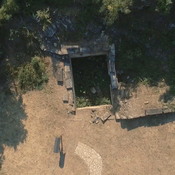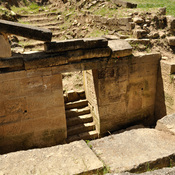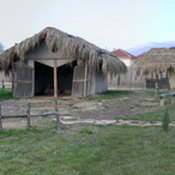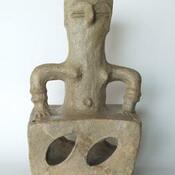Er zijn nog geen Nederlandstalige annotaties. Hier volgen annotaties in het Engels.
The Skopje Aqueduct is an archaeological site located in the village of Vizbegovo 2 km northwest from central Skopje, Macedonia. The Skopje Aqueduct is the only aqueduct in Macedonia, and one of three largest and well preserved in the former Yugoslavia along with Diocletianus Aqueduct near Split, Croatia and Bar Aqueduct in Montenegro.
The question of when the Skopje Aqueduct was built is unclear even today. There are three theories:
- during the reign of Rome (1st century), according to this theory Aqueduct has led the water to Legionary settlement Scupi
- during the reign of Byzantine Empire (reign of Emperor Justinian I), according to this theory, Aqueduct shipping water to new settlement Justiniana Prima
- during the reign of Ottoman Empire, according to this theory Aqueduct is built in 16th century for a large number of Turkish public hamams.
This aqueduct was in use until the eighteenth century. From this impressive structure of stone and brick, nowadays is remained only about 386 meters with 55 arches. Today is assumed that the aqueduct took water from the spring Lavovec (village Gluvo in mountain Skopska Crna Gora), 9 kilometers northwest from Skopje and brought water to city center.
The Skopje Aqueduct is an archaeological site located in the village of Vizbegovo 2 km northwest from central Skopje, Macedonia. The Skopje Aqueduct is the only aqueduct in Macedonia, and one of three largest and well preserved in the former Yugoslavia along with Diocletianus Aqueduct near Split, Croatia and Bar Aqueduct in Montenegro.
The question of when the Skopje Aqueduct was built is unclear even today. There are three theories:
- during the reign of Rome (1st century), according to this theory Aqueduct has led the water to Legionary settlement Scupi
- during the reign of Byzantine Empire (reign of Emperor Justinian I), according to this theory, Aqueduct shipping water to new settlement Justiniana Prima
- during the reign of Ottoman Empire, according to this theory Aqueduct is built in 16th century for a large number of Turkish public hamams.
This aqueduct was in use until the eighteenth century. From this impressive structure of stone and brick, nowadays is remained only about 386 meters with 55 arches. Today is assumed that the aqueduct took water from the spring Lavovec (village Gluvo in mountain Skopska Crna Gora), 9 kilometers northwest from Skopje and brought water to city center.



